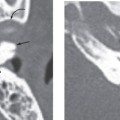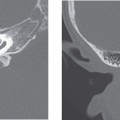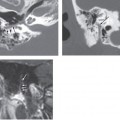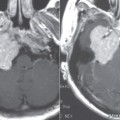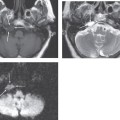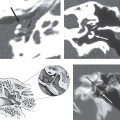CHAPTER 48 Longitudinal Temporal Bone Fractures
Epidemiology
Longitudinal temporal bone fractures are often the result of blunt head trauma to the temporal or parietal bone with the force transmitted from lateral to medial. Specifically, these fractures occur along the long axis of the petrous temporal bone. Although most fractures of the temporal bone can be complex, longitudinal fractures are more common (70 to 90%) than transverse fractures (10 to 30%).
Clinical Features
Many patients with acute temporal bone fractures present with hemotympanum, hearing loss, or, less commonly, vertigo. Lack of resolution of conductive hearing loss often is due to ossicular chain discontinuity. Longitudinal fractures can also be directly associated with facial nerve paralysis if there is involvement of the internal auditory canal, but these symptoms can often be delayed and incomplete. This often occurs as a result of displaced fragments within the middle ear.
Pathology
Patients with longitudinal fractures are at increased risk of developing cholesteatoma secondary to deposition of squamous epithelial debris into the middle ear along the fracture line. The fracture may involve the tegmen tympani and tegmen mastoideum. As a result, patients are at risk for cerebrospinal fluid (CSF) leaks and meningitis.
Treatment
Longitudinal fractures can result in conductive hearing loss, which may resolve with time if the ossicular chain is not disrupted. However, disruption or damage to the ossicular chain may require surgical intervention and ossicular bone reconstruction.
Stay updated, free articles. Join our Telegram channel

Full access? Get Clinical Tree


